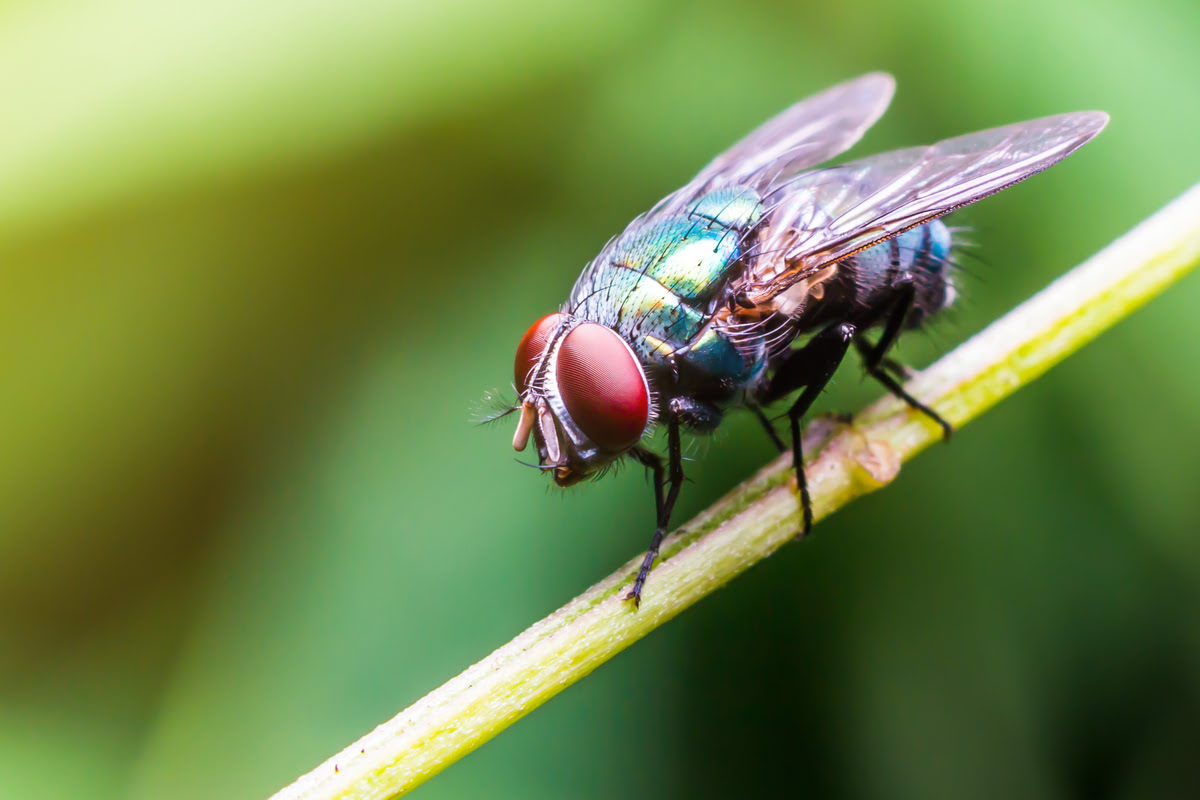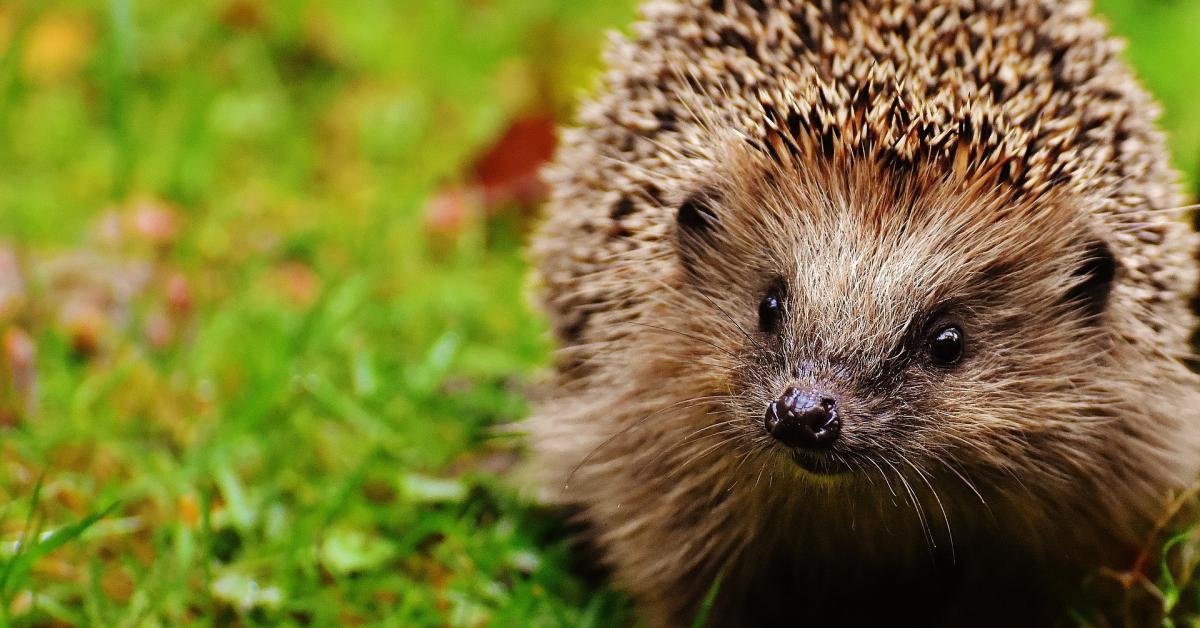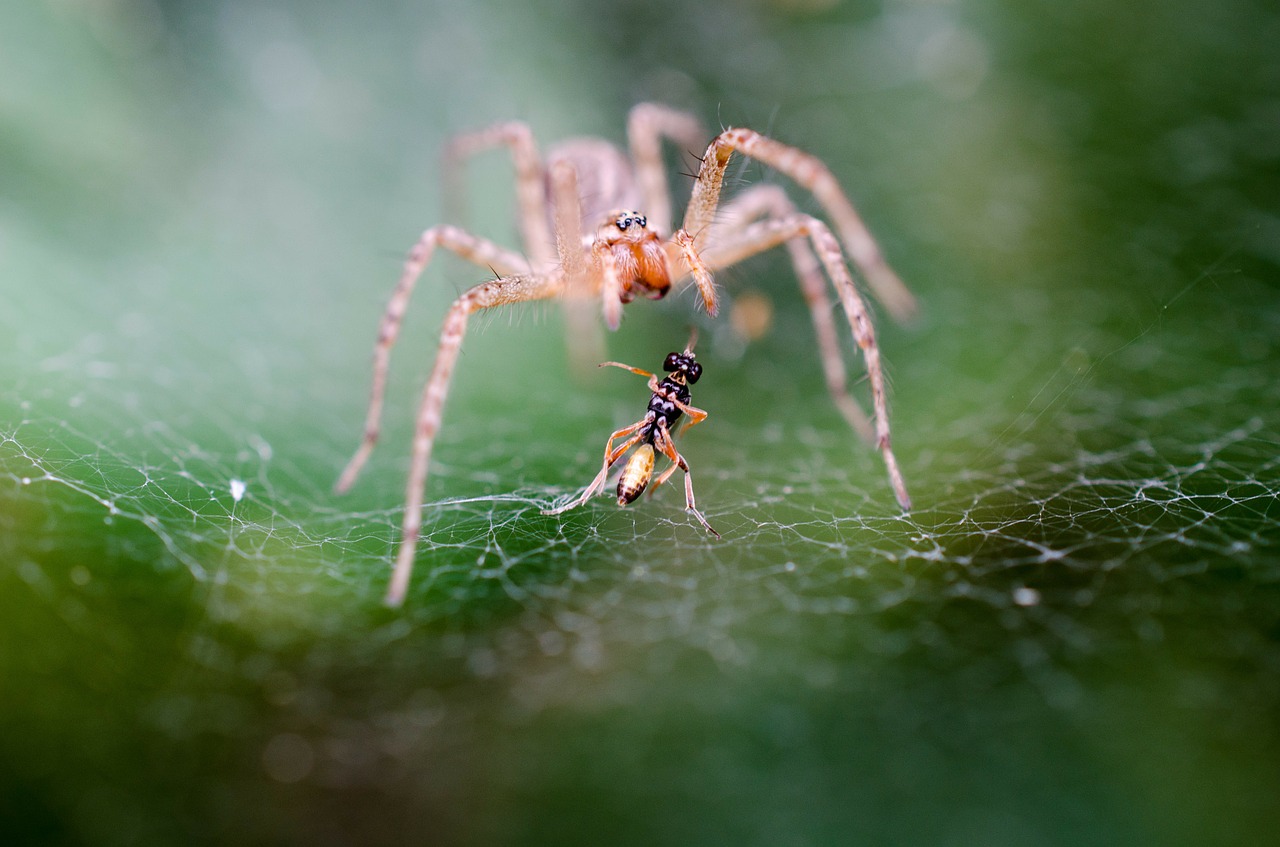Home>Gardening News and Trends>Latest News>What Makes Insects Different From Other Animals


Latest News
What Makes Insects Different From Other Animals
Modified: January 22, 2024
Discover the latest news on what makes insects different from other animals. Explore their unique characteristics and adaptations in this informative article.
(Many of the links in this article redirect to a specific reviewed product. Your purchase of these products through affiliate links helps to generate commission for Chicagolandgardening.com, at no extra cost. Learn more)
Table of Contents
Introduction
Insects are a diverse group of creatures that play an essential role in our ecosystems. With over a million identified species, they make up the largest and most abundant group of animals on Earth. Despite their small size, insects have managed to thrive in almost every habitat, from the depths of the ocean to the highest mountaintops. What sets them apart from other animals is their unique and fascinating characteristics, which have enabled them to survive and adapt over millions of years.
In this article, we will explore the distinguishing features of insects and examine the ways in which they differ from other animals. We will delve into the remarkable adaptations that allow insects to thrive in various environments and discuss their importance to the balance and functioning of ecosystems.
Whether it’s the intricately-designed wings of a butterfly or the diligent construction of a bee hive, insects have captivated scientists and nature enthusiasts for centuries. By gaining a deeper understanding of what makes insects different from other animals, we can appreciate their vital role in our world and work towards their conservation and protection.
Body
Insects possess several unique characteristics that set them apart from other animals. One of their defining features is their exoskeleton, a hard external covering that provides support and protection. Unlike animals with internal skeletons, such as vertebrates, insects’ exoskeletons prevent them from growing continuously. Instead, they undergo a process called molting, shedding their old exoskeleton and growing a new, larger one.
Furthermore, insects have three distinct body segments: the head, thorax, and abdomen. Their three pairs of legs are attached to the thorax, allowing them to move quickly and efficiently. Additionally, most insects have two pairs of wings, which are highly specialized for flight. These wings come in various shapes and sizes, often displaying vibrant colors and intricate patterns that aid in camouflage and mate selection.
Another notable characteristic of insects is their ability to undergo metamorphosis. Unlike most animals that grow gradually, insects often go through a complete metamorphosis, transitioning from egg to larva (caterpillar or maggot), pupa, and finally, an adult. This process allows insects to occupy different ecological niches at different stages of their life cycles, increasing their chances of survival and adaptation.
While insects share similarities with other animals, such as the need for food, water, and shelter, there are significant differences that set them apart. Unlike mammals and birds that regulate their body temperature internally, insects are ectothermic, meaning their body temperature is determined by the environment. This adaptation allows insects to thrive in diverse climates and habitats.
Insects also have specialized mouthparts that are tailored to their feeding habits. Some insects have piercing-sucking mouthparts, like mosquitoes and bedbugs, which allow them to feed on the blood of other animals. Others, like bees and butterflies, have long tongues called proboscis to extract nectar from flowers. This variety in feeding adaptations contributes to the essential role insects play as pollinators in ecosystems.
Additionally, insects have impressive sensory capabilities. While their eyes may differ in structure from those of humans, insects possess compound eyes that contain multiple lenses. This allows them to detect motion and perceive a panoramic view of their surroundings. In addition to their compound eyes, insects often have specialized receptors, such as antennae, for detecting chemical signals, helping them locate food sources, mates, and potential dangers.
Characteristics of Insects
Insects possess a variety of unique characteristics that distinguish them from other animals. These distinct traits have allowed them to adapt and thrive in almost every corner of the planet. Let’s explore some of the key characteristics of insects:
- Exoskeleton: Insects have a hard exoskeleton that covers their body, providing support and protection. This external skeleton prevents them from growing continuously, so they undergo molting to shed their old exoskeleton and grow a new one.
- Three Body Segments: Insects have three distinct body segments: the head, thorax, and abdomen. The head contains sensory organs and mouthparts, while the thorax is where the legs and wings are attached. The abdomen houses many vital organs.
- Six Legs: Most insects have six legs, attached to the thorax. These legs allow them to move quickly and efficiently, enabling them to navigate various terrains and environments.
- Wings: Many insects have wings, providing them with the ability to fly. The wings can be transparent or adorned with elaborate colors and patterns, aiding in flight and serving various functions, such as attracting mates or providing camouflage.
- Metamorphosis: Insects often undergo metamorphosis, a transformation from one stage to another, as they grow and develop. This process can include egg, larva, pupa, and adult stages, with each stage serving a different purpose in the life cycle of the insect.
- Ectothermic: Unlike mammals and birds, which can regulate their body temperature internally, insects are ectothermic, meaning their body temperature is influenced by the surrounding environment. They rely on external heat sources to warm themselves and become more active.
- Specialized Mouthparts: Insects have diverse mouthpart structures adapted for their specific feeding habits. For example, mosquitoes and bedbugs have piercing-sucking mouthparts to extract blood, while bees and butterflies have long tongues to extract nectar from flowers.
- Compound Eyes: Insects have compound eyes that consist of multiple tiny lenses, allowing them to detect a wide field of view and perceive motion. This sophisticated vision helps them navigate their surroundings and detect potential threats or food sources.
- Antennae: Many insects have antennae, which serve as sensory organs for detecting chemical signals in the environment. These chemical cues help insects locate food, mates, and navigate their surroundings.
These unique characteristics are fundamental to the success of insects in a wide range of environments. Their ability to adapt, fly, and undergo metamorphosis allows them to exploit different resources and occupy various ecological niches. Understanding these characteristics is crucial for appreciating the diversity and importance of insects both in our ecosystems and in our everyday lives.
Differences between Insects and Other Animals
Insects have a distinct set of characteristics that differentiate them from other animals. While they share some similarities, such as the need for food, water, and shelter, there are significant differences that set insects apart. Let’s explore some of the key differences between insects and other animals:
- Exoskeleton: One of the most notable differences is the presence of an exoskeleton in insects. Unlike vertebrates, which have internal skeletons, insects have a hard outer covering that provides support and protection. This exoskeleton limits growth, and insects must molt to shed their old exoskeleton and accommodate their increasing size.
- Segmented Bodies: Insects have three distinct body segments: the head, thorax, and abdomen. This is different from the body structure of many other animals, which typically have a more integrated body without distinct segments.
- Number of Legs and Wings: While most insects have six legs, this is not the case for other animals. Mammals have four legs, birds have two legs and two wings, and reptiles can have varying numbers of legs. Insects also stand out with their ability to fly, thanks to their specialized wings.
- Metamorphosis: Insects often undergo metamorphosis, a process where they transform from one stage to another as they grow. This complete metamorphosis includes distinct stages like eggs, larvae, pupae, and adults. In contrast, many other animals, such as mammals and birds, have different but less drastic growth patterns.
- Ectothermic Nature: Insects are ectothermic, meaning their body temperature is regulated by the environment. They rely on external heat sources, such as the sun or warm surfaces, to warm themselves. In contrast, mammals and birds are endothermic, capable of internally regulating their body temperature.
- Mouthpart Adaptations: Insects showcase a wide range of mouthpart adaptations for various feeding habits. Some insects, like mosquitoes, have piercing-sucking mouthparts to extract blood. Others, like bees, have long tongues to extract nectar from flowers. In contrast, mammals have specialized teeth and tongues adapted for their specific diets.
- Vision and Antennae: Insects often possess compound eyes, consisting of multiple lenses that provide a wide field of view and detect motion. They also have antennae, which serve as sensory organs to detect chemical signals in the environment. Many other animals have different visual abilities and lack antennae.
These differences highlight the unique adaptations and evolutionary pathways that insects have taken to thrive in various ecosystems. Understanding these distinctions not only expands our knowledge of these remarkable creatures but also allows us to appreciate their vital role in the natural world.
Insect Adaptations
Insects have developed numerous adaptations that enable them to thrive in diverse environments and successfully compete with other organisms. These adaptations have evolved over millions of years, allowing insects to occupy various ecological niches and exploit available resources. Let’s explore some of the remarkable adaptations that insects possess:
- Camouflage: Many insects have developed camouflage mechanisms to blend in with their surroundings. They may have colors and patterns that match their habitat, making them difficult for predators to spot. For example, stick insects have elongated bodies that resemble tree branches, allowing them to remain inconspicuous.
- Mimicry: Some insects have evolved to mimic the appearance of others in order to gain protection or access to resources. This can include mimicking the coloration or behavior of toxic or unpalatable species, deterring potential predators.
- Flight: Insects were the first animals to develop the ability to fly, and this adaptation has greatly contributed to their success. Flight allows insects to quickly disperse, find mates, and access food resources that may be difficult to reach on the ground.
- Chemical Defense: Many insects produce and release chemical compounds as a defense mechanism. These chemicals can be used to deter predators or communicate with other individuals of the same species. For example, some beetles can release noxious odors or toxins to repel potential attackers.
- Social Behavior: Certain insect species, such as ants, bees, and termites, have evolved complex social structures and cooperative behaviors. This adaptation allows them to live in highly organized colonies, dividing tasks among different castes of individuals and increasing their chances of survival.
- Specialized Mouthparts: Insects exhibit a wide range of mouthpart adaptations to meet specific feeding requirements. From the long tongues of butterflies and bees to the piercing-sucking mouthparts of mosquitoes and fleas, their varied mouthpart structures enable them to feed on different types of food sources.
- Seasonal Adaptations: Insects have also evolved strategies to survive harsh environmental conditions. Some species undergo diapause, a period of dormancy or reduced metabolic activity, to wait out unfavorable seasons. Others produce resistant eggs or have freeze-tolerant adaptations to withstand cold temperatures.
These adaptations demonstrate the incredible resilience and versatility of insects. Their ability to adapt and thrive in a wide range of environments is a testament to the evolutionary success of this diverse group of organisms. Studying these adaptations not only deepens our understanding of the natural world but also highlights the importance of preserving and protecting these remarkable creatures.
Importance of Insects in Ecosystems
Insects play a crucial role in the functioning and balance of ecosystems worldwide. Their presence and contributions have far-reaching impacts on the environment, other species, and even humans. Let’s explore the importance of insects in ecosystems:
- Pollination: Insects, particularly bees, butterflies, moths, and flies, are essential pollinators. They transfer pollen from the male reproductive organs of flowers to the female reproductive organs, facilitating plant reproduction. Approximately 80% of all flowering plants rely on animal pollinators, including insects, to produce seeds and fruits.
- Food Chain: Insects occupy various levels in the food chain, serving as a vital food source for many other organisms. Insect larvae, such as caterpillars, are important prey for birds, reptiles, amphibians, and small mammals. In turn, these insectivores contribute to the stability and diversity of ecosystems.
- Decomposition and Nutrient Cycling: Insects, such as beetles and flies, play a critical role in decomposition. They break down organic matter, like dead plants and animals, into smaller pieces, aiding in the recycling of nutrients back into the ecosystem. This process helps maintain nutrient cycles and supports the growth of new plants.
- Seed Dispersal: Certain insects, including ants and beetles, assist in seed dispersal. They carry seeds to new locations as they forage for food, helping plants establish new colonies and increasing species diversity in different areas.
- Biological Control: Insects provide natural pest control services by preying upon or parasitizing other insects that are considered agricultural pests. Ladybugs, lacewings, and predatory wasps are examples of beneficial insects that help control populations of aphids, caterpillars, and other crop-damaging pests, reducing the need for chemical pesticides.
- Soil Aeration and Nutrient Cycling: Burrowing insects like earthworms and termites contribute to soil health by aerating the soil through the creation of tunnels. This improves water infiltration and nutrient availability, benefiting plant growth and overall ecosystem productivity.
- Indicator Species: Insects can serve as indicators of ecosystem health and environmental changes. Their populations and diversity can reflect the stability and ecological balance of an ecosystem. Changes in insect populations can indicate shifts in habitat quality, pollution levels, or climate change impacts.
The intricate interconnectedness and dependence on insects highlight the importance of conserving and protecting these small but mighty creatures. Preserving their habitats, reducing pesticide use, and promoting sustainable agricultural practices are necessary to ensure the continued functioning and resilience of ecosystems around the world.
Conclusion
Insects, with their unique characteristics and adaptations, hold a significant place in the natural world. They possess exoskeletons, segmented bodies, specialized mouthparts, and various reproductive strategies, making them distinct from other animals. Their resilience, ability to fly, and undergo metamorphosis have allowed them to thrive in diverse environments, contributing to their status as the most abundant and diverse group of animals on Earth.
The importance of insects in ecosystems cannot be overstated. They play critical roles as pollinators, aiding in plant reproduction and the production of seeds and fruits. Insects serve as a crucial link in the food chain, providing sustenance for many carnivorous organisms and aiding in nutrient cycling through decomposition. They also contribute to seed dispersal, biological pest control, soil health, and act as indicators of ecosystem health.
Understanding the significance of insects enriches our appreciation for the complex and interconnected web of life. It highlights the need to conserve and protect these remarkable creatures and their habitats. Measures to promote sustainable agriculture, reduce pesticide use, and preserve natural habitats are vital in ensuring the survival of insect populations and the overall well-being of ecosystems.
As we continue to explore and study insects, we uncover more of their extraordinary adaptations and contributions to the world. A deeper understanding of these small but mighty creatures not only expands our knowledge but also reinforces the importance of biodiversity and the delicate balance that exists in our natural ecosystems.







